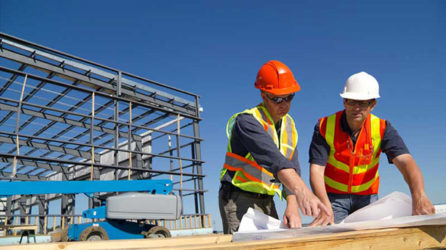If you’ve ever had questions about who would be considered an authorized, qualified, or competent person, don’t fret as it’s one of our most frequently asked questions. While OSHA 1910 and 1926 provide textbook definitions, we understand that things aren’t as clear-cut in the field. In this post, we’re breaking down how each of these designations differs and why you need to be able to identify them on the jobsite.
Authorized Person
The most straight-forward of these definitions is that of an authorized person. An authorized person simply means a person approved or assigned by the employer to perform a specific type of duty or to be at a specific location at the jobsite. For example, a signal person or flagger may be authorized to be at entrances or roadways leading to a job site. In general industry, a worker may be authorized to apply or remove a lock (lockout/tagout).
Competent person
A competent person is someone capable of identifying existing and predictable hazards in the surroundings or working conditions which may be unsanitary, hazardous, or dangerous to employees. A competent person also has the authorization to take immediate corrective measures to remove or eliminate that hazard Among the possible duties of a competent person is the responsibility for conducting pre/post-shift inspections of scaffolds and worksites.
While a competent person must be able to demonstrate their expertise in safety within the subject matter, it does not mean they must hold a recognized degree. Typically though, a competent person does possess a significant amount of experience doing the job they are overseeing. It is also possible that any given worksite may have multiple competent people or one person who is competent in multiple areas.
An example of this in action is as follows: In a trenching operation, a competent person must be able to identify the hazards within the operation and solve any problems that may arise. If the hazard cannot be mitigated, a competent person is charged with the responsibility of stopping the work until the concerns can be addressed and resolved. Resolving specific issue(s) may require a design or plan solution and the input of a qualified person.
Qualified Person
A qualified person is someone who has successfully demonstrated their ability to solve or resolve problems relating to the subject matter work, or project. Qualified persons demonstrate proficiency by holding a recognized/accredited degree, certificate, or professional standing. In general industry, the definition varies slightly but significantly. According to 1910, a qualified person is “one with a recognized degree or professional certificate and extensive knowledge and experience who is capable of design, analysis, evaluation, and specifications in the work, project, or product.” The key differentiator is that the construction regulation requires a qualified person to be able to demonstrate proficiency in the work or project on top of having both a certification and industry experience.
How do the functions of a Competent Person differ from a Qualified Person?
Where both a qualified person and competent person may be able to identify potentially unsafe working conditions or hazards, only a competent person has been authorized by the employer to immediately correct or mitigate risks. For this reason, OSHA inspector may likely interview the appointed competent person during an inspection. While it is possible for a qualified person to be designated as a competent person, it is clearly written in the OSHA Standard that this person must meet both the qualifications of a qualified person (certified degree and relevant experience) and that of a competent person (experience identifying hazards AND authorization to mitigate risk).
It’s important to remember that having an advanced technical degree does not automatically qualify an individual as a competent person and neither does taking the necessary safety courses. It’s important to remember that a competent person can only be designated by an employer and has the work experience, hazard recognition training, and has been given the authority from the employer to take immediate corrective measures.
Related Training Course: 30-Hour OSHA Training: Construction & General Industry
When working in the field it’s important to understand the roles of every worker on site. Whether it’s knowing who’s authorized to be at a specific location or identifying who is there to safeguard the jobsite, understanding the functions of authorized, competent, and qualified persons are essential to the success of any site. For employers, understanding the distinction between each designation is crucial to consistently maintain full compliance and may be the difference between completing a job on time or facing tough penalties and counterproductive stop-work orders


